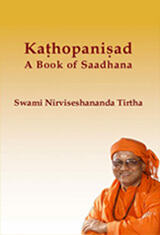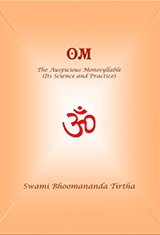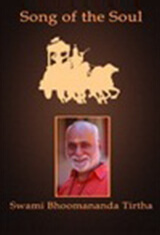Resources
Sanskrit–Our Vibrant Glorious heritage
Swami Bhoomananda Tirtha
Our debt to Sanskrit language and Sanskrit culture will be repaid only when we are able to build a “Sanskrit Nagari” somewhere in India, with all modern amenities, where about two lakh people will live together and conduct their affairs in Sanskrit, and thus re-establish Sanskrit as the official language! There the children should learn Sanskrit in a natural way as their mother-tongue.
…The real monuments of India’s ancient cultural heritage are the Vedas, Epics and other texts constituting the vast Sanskrit literature bequeathed to us through generations. It is because of the fact that these numerous scriptural compositions were composed in Sanskrit, the most scientific and refined language in the world, that we are still able to understand them with the same clarity and emphasis, as it was thousands of years ago. No other language has survived the onslaught of time as Sanskrit has. It is our scriptures that reflect India’s culture more than any physical ruins and relics of the past.
That is why Sanskrit is called Deva-bhāshā, an extraordinary or supra- worldly language!
The design and structure of Sanskrit is extremely scientific and logical. All the sounds and words that can be produced by the human mouth have been codified and arranged in a natural sequence to form the string of alphabets. The manner of blending the hard-soft, and soft-hard consonants in Sanskrit, like milk and water, is extremely interesting and thought-provoking. Sanskrit language, which has been reigning for countless millennia without any mutilation or decay, is vibrantly alive even today. To think of it as a dead language would only be sheer foolishness, downgrading our heritage.
Sanskrit was the official language in ancient India, just as in a way, Hindi and English are today. Sanskrit was the common means of communication between the Kings and scholars of the different kingdoms in our country. It was the inter-regional language of the entire Indian subcontinent.
While we are happy that we have imbibed English language so well, we should remember that it should not be at the cost of our own language, Sanskrit! We can never allow Sanskrit, the backbone of our culture and traditions, to become secondary and obscure. Sanskrit language is rich in words, ideas, metres, subtle etymological and logical foundation.
Any language can survive long only if its core constituents are preserved carefully. We should have extreme care and attention in choice of words, formation of sentences, adherence to grammar, and clarity of pronunciation. Teachers of language and the audio-visual media must pay particular attention to this. In this regard, we should formulate a proper National perspective.
Our debt to Sanskrit language and Sanskrit culture will be repaid only when we are able to build a “Sanskrit Nagari” somewhere in India, with all modern amenities, where about two lakh people will live together and conduct their affairs in Sanskrit, and thus re-establish Sanskrit as the official language! There the children should learn Sanskrit in a natural way as their mother-tongue.
In due course an International University for study and research in Sanskrit should materialize there. People there should be able to study ancient Sanskrit texts and also produce contemporary Sanskrit literature, poetry, dramas and hold competitions that will draw worldwide attention.The contemplated ‘City of Sanskrit’ should be planned, built and developed facilitating these objectives.
If the lovers of Sanskrit and the Government of India begin to contemplate on these lines, that would be the greatest tribute to our cultural patriotism and allegiance…
– Vicharasethu-May 2014
“Sanskrit was the official language in ancient India, just as in a way, Hindi and English are today. ”
“Sanskrit language, which has been reigning for countless millennia without any mutilation or decay, is vibrantly alive even today. To think of it as a dead language would only be sheer foolishness, downgrading our heritage.”
 900 views
900 views

 Add to Favorites
Add to Favorites Add to Reading List
Add to Reading List






